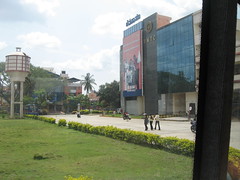This refers to the article in TOI & the guest column by Muralidhar Rao.
The basic premise on which public transport is based is that if the road seems too narrow with high volumes of traffic, there is a case for public transport. The higher the volume of traffic on a road, the stronger is the case for public transport.
In India, the low–cost /low–quality public buses are now not preferred by the upwardly mobile strata. Rail-based systems (such as Metro /Monorail) are very expensive to build & maintain & will therefore, not have extensive reach for a long time to come. The city cannot make do with widening roads & adding elevated roads continuously. No city has ever been able to “build” its way out of the problem. A new, faster & cost efficient system is required for quality conscious groups, over & above the existing low quality bus network. BRTS fulfills these requirements & is perhaps, the only available alternative worth exploring.






 I made a presentation yesterday to Mr.Subramanya (BBMP Commisioner) at his office about the single bus lane idea. He was quite interested and said he would discuss with his committee and revert. He also agreed very well that the solution was not to build or widen more roads or flyovers. He also mentioned some problems that are being faced with the underpasses construction on Bellary road - the actual costs were much higher than anticipated because numerous problems had cropped up - conduits for sewerage, water, telephone, electricity, etc that were marked incorrectly on admittedly very old drawings that now need to be re-aligned !
I made a presentation yesterday to Mr.Subramanya (BBMP Commisioner) at his office about the single bus lane idea. He was quite interested and said he would discuss with his committee and revert. He also agreed very well that the solution was not to build or widen more roads or flyovers. He also mentioned some problems that are being faced with the underpasses construction on Bellary road - the actual costs were much higher than anticipated because numerous problems had cropped up - conduits for sewerage, water, telephone, electricity, etc that were marked incorrectly on admittedly very old drawings that now need to be re-aligned !
